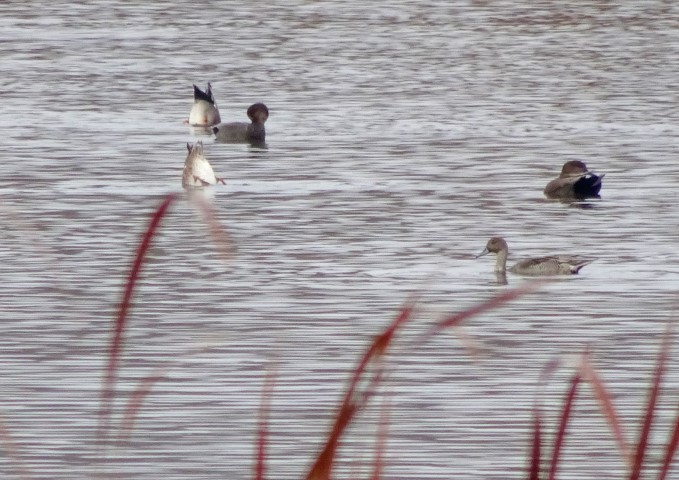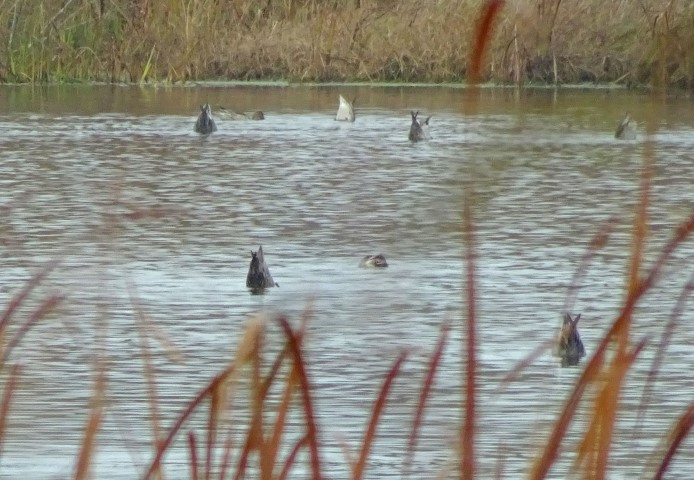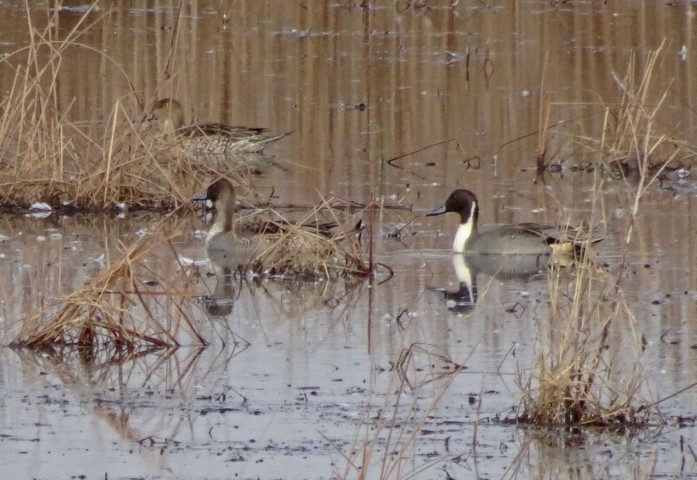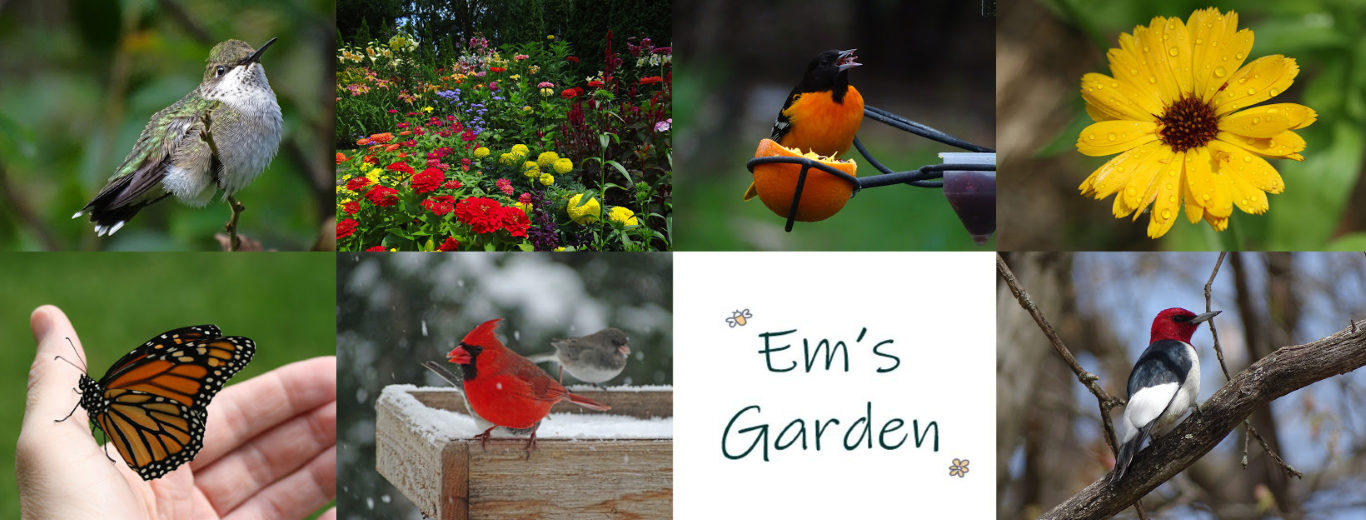After several decades of birdwatching I’m pretty good at identifying songbirds, but I still have a long way to go when it comes to shorebirds and ducks.
In late October a friend and I did some birdwatching at Horicon Marsh. In addition to being treated to the french-horn-like sounds of a flock of Trumpeter Swans, we found ourselves surrounded by a flock of ducks.
It took us quite awhile to identify them because they were feeding, and most of the time they were bottoms-up. When they did come up for air it was only for a split-second and then their slender necks slipped right back into the water again.

There were scores of these ducks everywhere we looked, but most of them were upside-down.

Eventually my friend was able to snap a photo of two males and a female floating above the water. We checked a birding app for matches and discovered these birds are Northern Pintails. They are a very common duck and their name makes sense once you notice their long tail feathers.

Northern Pintails feed at the surface of the water by filtering it. They eat insects, seeds, crustaceans and snails as well as grains and weeds.
I won’t have trouble identifying these birds in the future. If it’s a long-tailed duck with its rump in the air, it’s a Northern Pintail.
